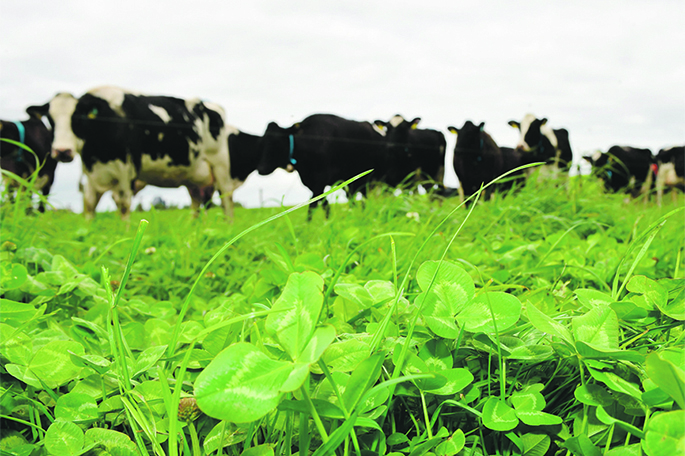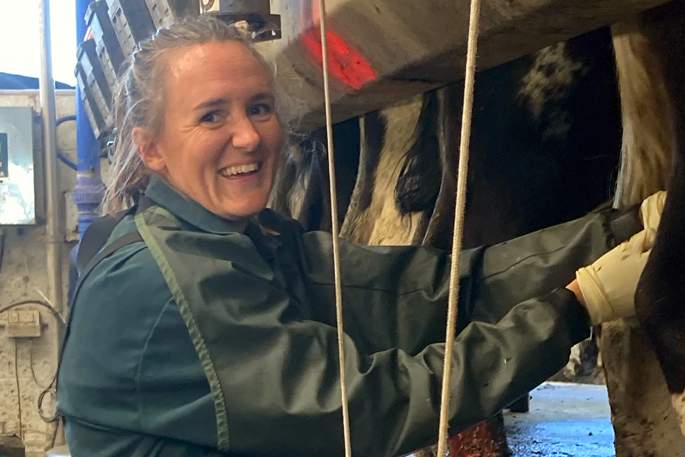I get the feeling that our overseas markets are beginning to wake up to the fact that we might just not be as 100 per cent pure as we make out, and that our supposed efforts to reduce our emissions have been in the form of cash paid for some pretty suspect savings by other countries. So, when I was invited to go to a session in Te Awamutu on climate change and agricultural gas emissions, I made sure to be there. It appears that Fonterra, DairyNZ, MPI and MfE have joined forces to start an education process at consultant and farmer levels. DairyNZ has new staff focused on gases, and AgResearch also rolled along to tell us what they have been finding in what, in some cases, are very expensive trials about methane and nitrous oxide mainly from cows. First, we got a rundown on climate change itself, including what we knew already, which seemed a mixed bag from audience group answers. Cow burps Then a rundown on trials conducted at Grasslands at Palmerston North on reducing the wicked methane from cow burps. They have compared results from different feeds, with forage rape apparently making the most difference, although most trials on this have been done with sheep. Fodder beet and maize silage results are still uncertain. High cereal diets (80 per cent of feed) can help, but are costly to use here. The item of most interest to me was that ‘pasture’ (80 per cent ryegrass, 20 per cent clover according to them) fared worst in all the trials. But when I asked about the soil components used to grow the pasture, they advised that they had decided not to include this in their current reporting. So, there was no information on the nitrate levels of the pasture, or how much urea had been used. Cows’ urine A report from Invermay on nitrous oxide followed, and the cows’ urine got the blame, and soil got mentioned nowhere. There were standoff facilities and urease inhibitors mentioned, and fodder beet was apparently better than kale in providing some reductions. They also offered some management practices to reduce greenhouse gases, including reducing replacement rates, breeding for higher BW with lower stocking rates (which tied for first in reductions), using alternative feed such as forage rape, applying N fertiliser along with a urease inhibitor or using standoff pads when N loss is highest. However, they varied somewhat when it came to measuring the cost of $/kgCO2e/ha saved, with alternative feed doing best and standoff pads most expensive. Since then I have done a lot of reading about the effects of urea on cattle, and was astonished to find that overseas they actually feed urea to cows to make up for shortfalls in protein content. High protein In New Zealand we have the reverse problem, in that for much of the growing season the pasture has very high protein content. So why are we doing our best to give our poor old cows permanent diarrhoea by smothering that high protein grass with more urea, most of which is either eaten, or goes straight through to groundwater? I was told by a farmer some years ago that he noticed that when cows went onto pasture that had had urea spread recently, they spent a huge amount of time at the trough, which of course resulted in more frequent urination. Well if your gut was boiling from being upset by too much of the wrong food for its microbes to cope with, and producing vast quantities of ammonia, you would probably head for the tap and then urinate freely. Some farmers seem to have been convinced by ‘experts’ that they can’t grow grass without urea, to the extent that the urea spreader follows the cows around the farm, and the spaces between grazings are relatively short. Add to that the often very long walks to the shed twice a day, and people see animals getting more and more tired, and thinner, and then expect them to get pregnant again immediately. White clover Mother Nature and white clover have for centuries been pretty good at growing pasture, and if we looked to helping them do their job better with mycorrhizae and bacteria, rather than pouring on endless chemical N, many farmers would probably be surprised at what happens. I did, and these days I have masses of feed for two cows, two donkeys and three goats, no squirting bottoms, and make huge amounts of hay off my one hectare.
Wednesday, April 17, 2024
Posted: 2:15pm Monday 16 Oct, 2017 | By Sue Edmonds
Gases in agriculture







0 Comments
Leave a Comment